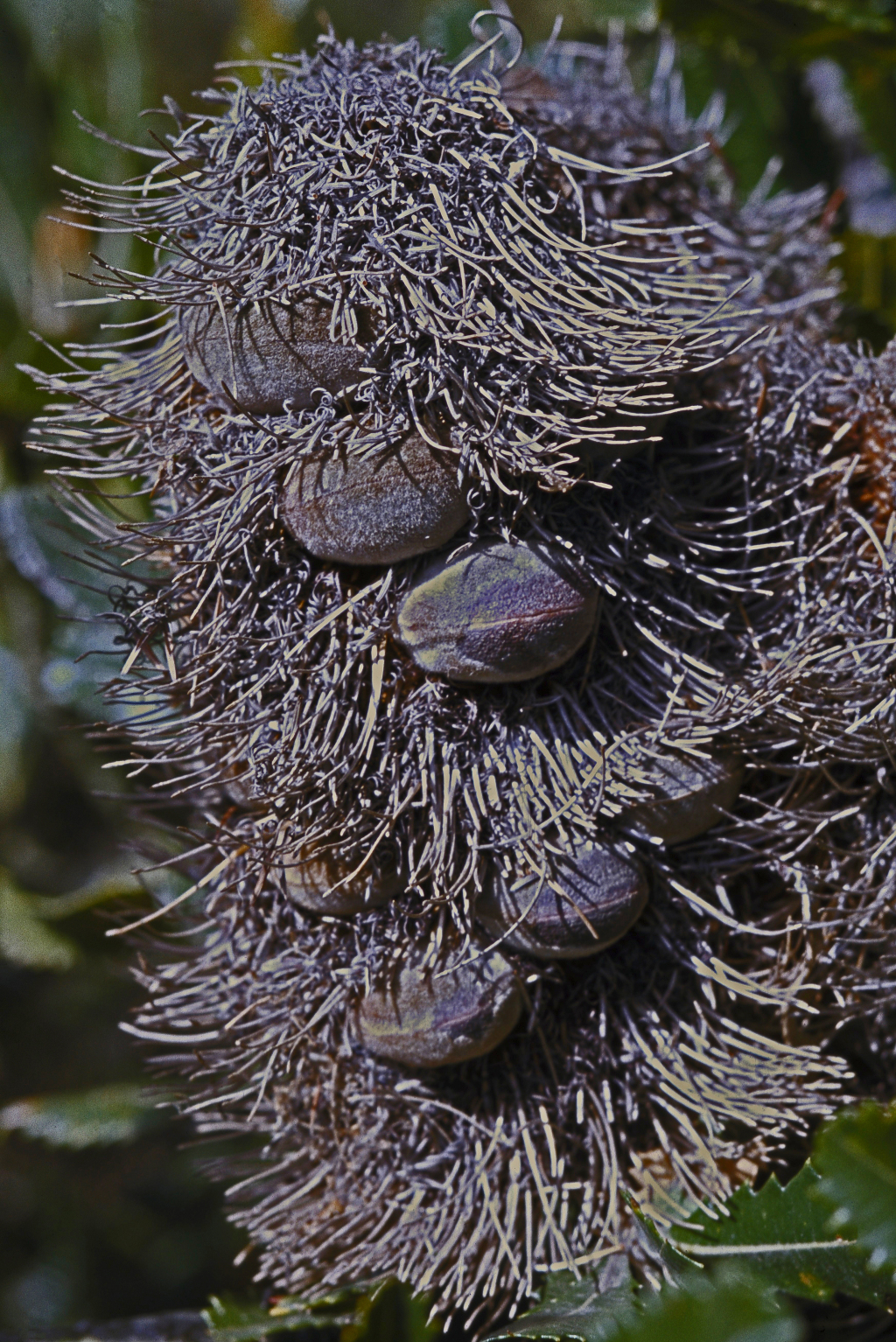Banksia serrata
L.f. Saw BanksiaShrub or tree to c. 16 m high; lignotuber present or absent; bark thick, warty, grey-brown; branchlets hirsute and tomentose with pale, velvety hairs, finally glabrescent. Leaves alternate, crowded, broad-oblong to narrowly obovate, mostly 10–20 cm long, 1–4.5 cm wide, not or slightly discolorous, upper surface green, shiny, lower surface at first tomentose; margins serrate except near base, slightly recurved, apex obtuse to truncate, mucronate; petiole 5–20 mm long. Inflorescence 7–20 cm long, 9–12 cm wide at anthesis. Tepals 38–45 mm long, cream with a grey limb, hairy, persistent; style gently curved downwards then upwards, persistent. Follicles to c. 30, 25–35 mm long, prominently exserted, densely tomentose, brownish, glabrescent, opening only after fire. Body of seed more or less obovate, 10–12 mm long, wing 30–34 mm long. Flowers mostly Jan.–Jun.
GipP, OtP, DunT, EGL, EGU, WPro, Strz. Also Qld, NSW, Tas. In Victoria confined to coastal and hinterland areas east of Waratah Bay. Often locally common on sandy soils in open-forests.
Jeanes, J.A. (1996). Proteaceae. In: Walsh, N.G.; Entwisle, T.J., Flora of Victoria Vol. 3, Dicotyledons Winteraceae to Myrtaceae, pp. 830–887. Inkata Press, Melbourne.
 Spinning
Spinning


